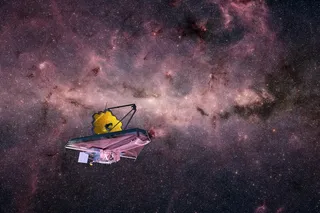Science or Sociology? Joseph Polchinski, 5/20/07 This is a continuation of the on-line discussion between Lee Smolin and myself, which began with my review of his book and has now continued with his response. A copy of this exchange (without the associated comment threads) is here. Dear Lee, Thank you for your recent response to my review. It will certainly be helpful in clarifying the issues. Let me start with your wish that I do more to address the broader issues in your book. When I accepted the offer to review these two books, I made two resolutions. The first was to stick to the physics, because this is our ultimate goal, and because it is an area where I can contribute expertise. Also, keeping my first resolution would help me to keep the second, which was to stay positive. I am happy that my review has been well-received. Your response raises some issues of physics, and these are the most interesting things to discuss, but I will also address some of the broader issues you raise, including the process of physics, ethics, and the question in the title. Let me emphasize that I have no desire to criticize you personally, but in order to present my point of view I must take serious issue both with your facts and with the way that they are presented. Regarding your points: The fictitious prediction of a non-positive cosmological constant. This is a key point in your book, and the explanation that you now give makes no logical sense. In your book you say (A) "... it [a non-positive cosmological constant] was widely understood to be a consequence of string theory." You now justify this by the argument that a non-positive cosmological constant is a consequence of unbroken supersymmetry (true), so A would follow from (B) Unbroken supersymmetry was widely understood to be a consequence of string theory. But even if this were true, it would not support your story about the observation of the dark energy leading to a "genuine crisis, ... a clear disagreement between observation and a prediction of string theory." There would already have been a crisis, since supersymmetry must obviously be broken in nature; seeing the dark energy would not add to this. But in fact the true situation, as you can find in my book or in many review articles, was closer to the opposite of B than to B: (B') Supersymmetry is broken in almost all Calabi-Yau vacua of heterotic string theory. We have no controlled examples because at least one modulus rolls off, usually to a regime where we cannot calculate. The solution to this problem may have to wait until we have a non-perturbative formulation of gravity, or even a solution to the cosmological constant problem. In your response you largely raise issues surrounding B', including the Witten quote, but I want to return to what you have actually written in your book. It is a compelling story, which leads into your discussion of "a group of experts doing what they can to save a cherished theory in the face of data that seem to contradict it." It surely made a big impression on every reader; it was mentioned in several blogs, and in Peter Shor's Amazon review. And it never happened. It is an example of something that that happens all too often in your book: you have a story that you believe, or want to believe, and you ignore the facts. You go on to challenge the ethics of string theorists in regard to how they presented the issue of moduli stabilization in their talks and papers. I am quite sure that in every colloquium that I gave I said something that could be summarized as "We do not understand the vacuum in string theory. The cosmological constant problem is telling us that there is something that we do not understand about our own vacuum. And, we do not know the underlying principle of string theory. These various problems may be related." The cosmological constant and the nature of string theory seemed much more critical than the moduli stabilization problem, and these are certainly what I and most other string theorists emphasized. This scientific judgment has largely been borne out in time. In 1995-98 these incredible new nonperturbative tools were developed, and over the next few years many string theorists worked on the problem of applying them to less and less supersymmetric situations, culminating in the construction of stabilized vacua. Obviously many questions remain, and these are widely and openly debated. It seems like a successful scientific process: people knew what the important problems were, worked in various directions (a fair number did work on moduli stabilization over the years), and when the right tools became available the problem was solved. As you point out, the stabilization problem is nearly one hundred years old, and now string theorists (primarily the younger generation, I might add) have solved it. You are portraying a crisis where there is actually a major success, and you are creating an ethical issue where there is none. AdS/CFT duality. You raise the issue of the existence of the gauge theory. There are two points here. First, Wilson's construction of quantum field theory has been used successfully for 40 years. It is used in a controlled way by condensed matter physicists, lattice gauge theorists, constructive quantum field theorists, and many others. To argue that a technique that is so well understood does not apply to the case at hand, the scientific ethic requires that you do more than just say Not proven! Sociology! as you have done. You need to give an argument, ideally pointing to a calculation that one could do, or at least discuss, in which one would get the wrong answer. I have given a specific argument why we are well within the domain of applicability of Wilson: there are 1+1 and 2+1 dimensional versions of AdS/CFT, which are also constructions of quantum gravity, and for which the gauge theory is super-renormalizable (and there are no chiral fermions): the counterterms needed to reach the supersymmetric continuum limit can be calculated in closed form - thus there is an algorithmic definition of the gauge theory side of the duality. You could perhaps argue that there will be a breaking of supersymmetry that will survive in the continuum limit, and we could sit down and do the calculation. But I know what this answer is, because I have done this kind of calculation many times (it is basically just dimensional analysis). Similar calculations, for rotational invariance and chiral symmetry, are routine in lattice gauge theory. As a further ethical point, in your book you state that it is astounding that Gary Horowitz and I ignore the question of the existence of the gauge theory, and you then use this to make a point about groupthink (this is in your chapter on sociology). While you were writing your book, you and I discussed the above points in detail, so you knew that we had not ignored the issue but had thought about it deeply. You do not even acknowledge the existence of a scientific counterargument to your statement, and in saying that Gary and I ignore the issue you are omitting facts that are known to you in order to turn an issue of science into one of sociology. Again you impose your own beliefs on the facts; thus I am reluctant to accept as accurate the various statements that you attribute elsewhere to anonymous string theorists and others. You raise again the issue of a weak form of Maldacena duality. As you know, it is very difficult to find a sensible weak form that is consistent with all the evidence and yet not the strong form. In my review I have gone through your book and papers and identified three proposals, and explained why each is wrong. Again, you have not acknowledged the existence of scientific counterarguments, but have just reasserted your original point. If your arguments had been made in a serious way, I would expect that you would have given some deep thought to them and be ready to defend them. There are some interesting points, one of which I will turn to next. The role of rigor and calculation. Here we disagree. Let me give some arguments in support of my point of view. A nice example is provided by your paper `The Maldacena conjecture and Rehren duality' with Arnsdorf, hep-th/0106073. You argue that strong forms of the Maldacena duality are ruled out because Rehren duality implies that the bulk causal structure is always the fixed causal structure of AdS_5, and so there cannot be gravitational bending of light. But this would in turn imply that there cannot be refraction in the CFT, because the causal structure in the bulk projects to the boundary: null geodesics that travel from boundary to boundary, through the AdS_5 bulk, connect points that lie on null boundary geodesics. Now, the gauge theory certainly does have refraction: there are interactions, so in any state of finite density the speed of propagation will be less than 1. (Since Rehren duality does not refer to the value of the coupling, this argument would hold even at weak coupling, where the refraction can be calculated explicitly.) You have emphasized that Rehren duality is rigorous, so apparently the problem is that you have assumed that it implies more than it does. Generally, rigorous results have very specific assumptions and very precise consequences. In physics, which is a process of discovery, this can make them worse than useless, since one tends to assume that their assumptions, and their implications, are broader than they actually are. Further, as this example shows, a chain of reasoning is only as strong as its weakest step. Rigor generally makes the strongest steps stronger still - to prove something it is necessary to understand the physics very well first - and so it is often not the critical point where the most effort should be applied. Your paper illustrates another problem with rigor: it is hard to get it right. If one makes one error the whole thing breaks, whereas a good physical argument is more robust. Thus, your paper gives the appearance of rigor, yet reaches a conclusion that is physically nonsensical. This question of calculation deserves further discussion, and your paper with Arnsdorf makes for an interesting case study, in comparison with mine with Susskind and Toumbas, hep-th/9903228. (I apologize for picking so much on this one paper, but it really does address many of the points at issue, and it is central to the discussion of AdS/CFT in your various reviews.) You argue that there are two difficulties with AdS/CFT: that strong forms of it are inconsistent with the bending of light by gravitational fields, and that the evidence supports a weaker relation that you call conformal induction. We also present two apparent paradoxes: that the duality seems to require acausal behavior, and negative energy densities, in the CFT. The papers differ in that yours contains a handful of very short equations, while ours contains several detailed calculations. What we do is to translate our argument from the imprecise language of words to the precise language of equations. We then find that the amount of negative energy that must be `borrowed' is exactly consistent with earlier bounds of Ford and Roman, gr-qc/9901074, and that a simple quantum mechanical model shows that an apparent acausality in the classical variables is in fact fully causal when one looks at the full quantum state. Along the way we learn something interesting about how AdS/CFT works. This process of translation of an idea from words to calculation will be familiar to any theoretical physicist. It is often the hardest part of a problem, and the point where the greatest creativity enters. Many word-ideas die quickly at this point, or are transmuted or sharpened. Had you applied it to your word-ideas, you would probably have quickly recognized their falsehood. Further, over-reliance on the imprecise language of words is surely correlated with the tendency to confuse scientific arguments with sociological ones. Finally, I have recently attended a number of talks by leading workers in LQG, at a KITP workshop and the April APS meeting. I am quite certain that the standard of rigor was not higher than in string theory or other areas of physics. In fact, there were quite a number of uncontrolled approximations. This is not necessarily bad - I will also use such approximations when this is all that is available - but it is not rigor. So your insistence on rigor does not actually describe how science is done even in your own field. Background independence. I think people are a bit tired of the who-is-more-background-independent argument, since it seems to come down to definitions. Let me put things in physical terms. As you say, suppose that the strong form of Maldacena duality is true. This would mean that we can consider a box as large as we want - a light-year, 10^6 light-years, with an arbitrarily small negative cosmological constant, and AdS/CFT provides a complete construction of quantum gravity within that space. This would include: the formation and decay of (nonsupersymmetric) black holes; graviton scattering at hyper-Planckian energies; physically continuous transitions from one topology, through a quantum state with no geometric interpretation, to a different topology; states where a submanifold of spacetime has a noncommutative geometry; states with a variety of apparent geometric singularities, where the physics is nonsingular. All of these, and many others with a variety of geometries and topologies (you can put a lot in an AdS box), and arbitrary quantum superpositions of them, can be identified in the gauge theory, and so are described algorithmically by the duality. It may not include spaces with interesting cosmologies, or with an effective positive cosmological constant. You call this a very weak and limited form of background independence. Even here you are blowing things out of proportion: your reply refers five times to the "global symmetry algebra," but almost immediately after the original work of Maldacena, the duality was extended to systems with reduced symmetry, or none. Your own PI colleagues, Alex Buchel and Rob Myers, have made important contributions to this subject, and I note also the series of papers by Hertog and Horowitz on strongly time-dependent boundary conditions. A second physics point concerns the constraints. It is not that I am ignorant of the conventional wisdom here, I am challenging it. You believe that the large Hilbert space in which the constraints act is necessary in order to describe all possible backgrounds of quantum gravity. No, only the much smaller set of states that satisfy the constraints is needed. The larger space may play a useful auxiliary role, but it is not physical: the universe cannot be in such a state, and observables must keep the system within the physical subspace. So what are these larger spaces for? One thing we have learned, from emergent gauge theory, is that they are not necessary: one can start from a system with no constraints, only physical variables, and the constraints are needed only to describe the classical limit efficiently. We have learned a similar lesson from dualities such as AdS/CFT: these larger spaces are very different in different classical limits, they are not intrinsic to the quantum theory. Thus, all this focus on constraints is putting effort into something that is unphysical and actually intrinsic to a certain classical limit. Cosmology. I have agreed that we may be far from sharp prediction. However, string theory has played a valuable role in suggesting new ideas. Moreover, the variety of kinds of models being explored phenomenologically is large; it is clear that some of these arise easily in the landscape (e.g. a pure cosmological constant), while others may be rigorously excluded (the constraints of Arkani-Hamed et al, and others). Regarding the atomic analogy, the long period that I was referring to was the hundred years between the first scientific argument for atoms (Dalton) and the confirmation (Brownian motion). I agree, however, that one should not get too caught up in analogies. No analogy is perfect: in the 19th century there was a wealth of unexplained phenomena from the natural world, while our current era is historically exceptional in that phenomena beyond the Standard Model are so few. RHIC. You say that quantum gravity is not being used here. But the QCD plasma entropy is being related to the Bekenstein-Hawking entropy, which depends on hbar, and the ideal viscosity (a concept discovered through AdS/CFT, which is now a standard idea in heavy ion physics) is quantum mechanical. Moreover, I am puzzled by your repeated statement that the evidence supports AdS/CFT describing only classical supergravity. The gauge theory is fully quantum mechanical, so if it contains classical gravity why is this not exactly what we are all looking for: a theory that unites Einstein's theory and quantum mechanics? This should be of great interest to anyone working on quantum gravity - how does the gauge theory manage to do this? So we look closer, and we find that it's... string theory! It is clear why you have trouble with this: according to your book, gravity is a theory of principle, which must be understood by seers, while gauge theory is a constructive theory, which can be built by craftsmen. AdS/CFT would then imply that craftsmen are dual to seers. But seriously, duality does erase distinctions that we make with our classical experiences and vocabularies, because one quantum theory has many classical limits. Thus, quantum mechanics first erased the distinction between particles and waves. QFT dualities erased the distinction between quanta and solitons, which once seemed absolute. Maldacena duality erases at least much of the distinction between gauge theory and gravity. Unexpected perhaps, but those who ignore this lesson are likely to end up as backward-seers rather than forward-seers. Other physics. Sean has suggested that I comment on the understanding of string theory in time-dependent backgrounds. Here I will give my own way of thinking about this, which is rather particle-physicsy; other string theorists might emphasize different things. If you have the flat spacetime S-matrix, you actually know a lot about curved spacetime, since you can form a very complicated geometry by throwing together a lot of gravitons in a coherent state. From a particle physics perspective, where the goal is to measure the underlying Lagrangian, this is enough: the S-matrix encodes all local physics in curved spacetime. Further, with this effective Lagrangian one can study processes in a fully curved spacetime, as long as the curvature stays below the string scale. One can then list things that are not covered by this: first, cosmological questions like initial conditions and spacetime singularities, and these are indeed open questions and the subject of active research; second, the possibility of an intrinsic non-locality in physics, so that local measurements do not capture everything. The second possibility has been widely discussed: the black hole information paradox gives a strong indication that such nonlocality exists; the black hole complementarity principle, and the holographic principle, are general statements of the nature of the nonlocality; and, the BFSS matrix theory and AdS/CFT duality are very concrete realizations of locality emerging from a nonlocal starting point. Certainly deep questions about the nature of time remain, and I expect that the solutions will build on our current understanding of the holographic principle. On the UV finiteness of string perturbation theory, the one-line physics proof is that the regions of world-sheet moduli space that would correspond to UV divergences in field theory actually turn out to describe IR physics. The decomposition of moduli space that Zwiebach uses to formulate closed-string field theory is probably the best for seeing this. The IR divergences are described by low energy effective field theory, so the finiteness problem is reduced to the already-solved problem of IR divergences in quantum field theory. This may seem awfully simple, but I have done enough calculational checks of different parts of it to take it seriously. Ethics and sociology. Coming back to ethics, the principal scientific ethic is that scientists take responsibility for what they say: When a statement is made, to what extent has it been thought through, and appropriate checks and counterarguments considered (and, yes, the appropriate calculations done)? To what extent are known difficulties acknowledged? When a new counterargument is given, is it addressed, and the original assertion modified if necessary? Are facts presented in a clear and direct manner? This is howscientists judge one another. It is clear why this is necessary: science works by the parallel activity of many minds, and it is necessary that information be exchanged in as accurate a way as possible. Given the above discussion, I find your claim to the ethical high ground to be ironic. Regarding group-think: you interpret the reaction of string theorists to your book as more evidence for your point of view. Rather, I think that much of this is a natural reaction to what many see as a distorted presentation of the facts. Regarding the personal insults, I think that you set the tone here with characterizations such as that quoted in the New Yorker, so it seems like posturing for you to claim the high road when a few string theorists respond in kind. However, I hope that those contributing to this discussion will try to keep to the same reasoned attitude that I have tried for. Overwhelmingly the concentration on string theory is a scientific judgement, made by a very diverse group of theorists. Look at any of the several dozen most well-known string theorists: my own scientific experiences and tastes, both inside and outside string theory, are very different from any of theirs, just as they are from each other. I think of myself as a theoretical physicist first, and cross over the boundaries between string theory and several other fields depending on what looks important and interesting, as do many others. String theorists can be rather focussed, but they are not as closed to new ideas as you portray. For example, such ideas as holography and eternal inflation were developed outside of string theory, and might have become `alternative ideas.' Instead they were recognized as likely parts of the big picture. There is a reasonable concern that younger string theorists, educated in string theory rather than in other fields, might find it harder to cross these lines. Indeed, during the first and second string revolutions, there was inevitably more concentration, as these new ideas opened up a whole range of new concepts and methods. It is a very positive development that new connections between string theory and other areas have developed - heavy ion physics, low energy hadronic physics, LHC physics, cosmology, mathematics, general relativity, and many areas of quantum field theory - and that many young people are taking advantage of the opportunity to cross these lines, and in both directions. This broadening of perspective should be, and I think is, strongly encouraged. Coming back to the question in the title, I have agreed that sociological effects exist; they must, since science is a human activity. However, when I read your book, knowing the facts, the case actually seems quite weak. To make the case for a strong sociological effect, at each turn you are forced to stretch the facts beyond recognition. On the other hand, when you discuss the science, your overemphasis on the usefulness and applicability of rigor ignores the kind of physical reasoning that physicists actually use in practice with great success, so your are leaving out at least 95% of what makes physics really work.
Guest Post: Joe Polchinski on Science or Sociology?
Explore how string theory addresses the cosmological constant problem and its implications for quantum gravity research.
More on Discover
Stay Curious
SubscribeTo The Magazine
Save up to 40% off the cover price when you subscribe to Discover magazine.
Subscribe












